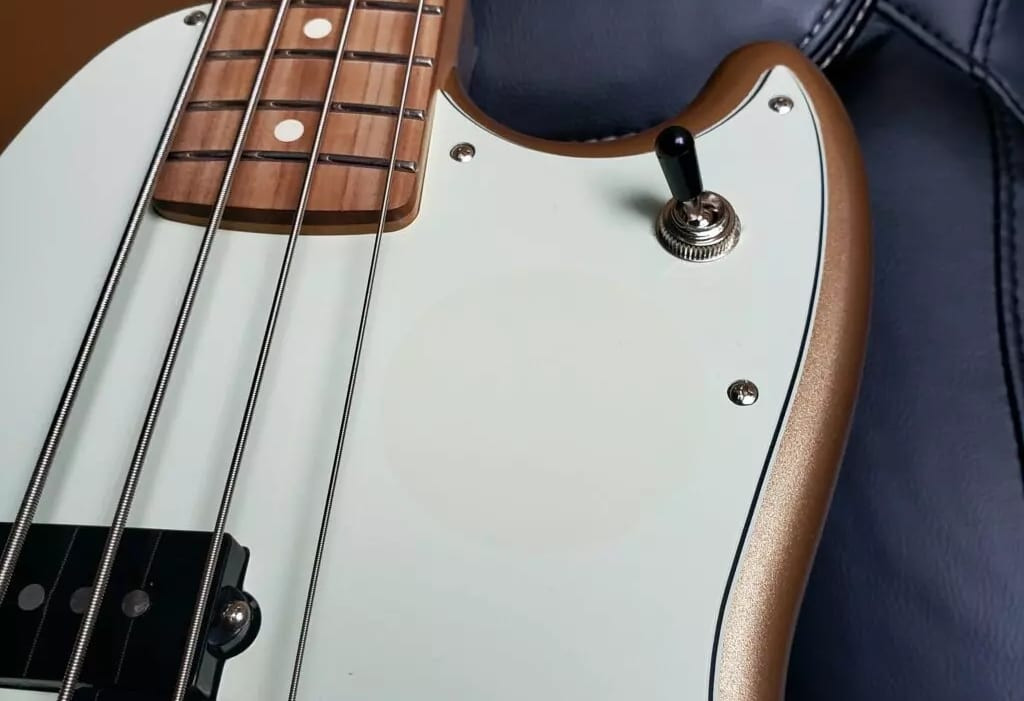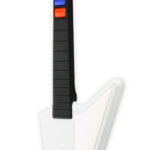Fender. The name itself resonates through music history. While icons like Buddy Holly and George Harrison wielded Fenders to shape generations of music, I’ve always been a bit of an outsider to the Fender camp. Despite respecting their legacy, especially Fender’s connection with Gretsch, their instruments just hadn’t clicked with me personally. Interestingly, my very first electric guitar, a Fender Squier Bullet from my school days, hinted at a different path, but I soon traded it for an Epiphone Sheraton II, a guitar that felt like a significant upgrade at the time. Strats never truly appealed, and even though a bandmate swore by his, decades passed before I seriously considered Fender again, beyond my trusty Fender Rumble 100 bass amp and the reliable Tweed cables on my pedalboard.
Then came a Vintera 50s Telecaster in Sonic Blue last summer. As a songwriter at heart, the Telecaster’s renowned versatility intrigued me. Fueled by my love for early rock and roll, the 50s Vintera seemed like the perfect entry point. To my surprise, I was blown away. The Telecaster was, in a word, amazing, prompting me to wonder why I’d overlooked them for so long.
For some time, the idea of a second bass had been brewing. My main bass is a Hofner, strung with flatwounds – a fantastic instrument with a warm, defined tone that perfectly suits my needs. However, its tonal palette is somewhat limited. Seeking more sonic versatility, I narrowed my search for a second bass down to short-scale models, making the transition from guitar to bass smoother. The Danelectro Longhorn and the Fender Mustang PJ emerged as frontrunners, both lauded in reviews. Ultimately, availability dictated my choice. The pandemic-era supply chain meant backorders and waiting lists. The Mustang PJ, fortunately, was in stock, so I decided to give it a try.
I understand the hype surrounding the Mustang PJ bass. I see why so many players love it. Regrettably, in my case, the connection just wasn’t there. I genuinely wanted to bond with this bass, but despite my best efforts, it didn’t resonate.
First Impressions: The Look and Finish
Let’s delve into the aesthetics of the Mustang PJ, starting with the available color options. Currently, Fender offers the PJ in Aged Natural, Sienna Sunburst, and Firemist Gold. While none immediately grabbed me as exceptionally striking, Firemist Gold edged out the others as the most appealing. Sienna Sunburst, in particular, had potential, but Fender’s decision to pair it with a black pickguard felt like a misstep. A white or pearloid pickguard would have complemented the Sienna Sunburst finish far more elegantly.
Years prior, when I first considered a PJ bass, the Seafoam Green finish caught my eye. I almost ordered one then, but guitars took precedence. By the time I was ready for a second bass, Seafoam Green was no longer an option, leaving Firemist Gold as the best available alternative.
The Firemist Gold finish itself was flawless, exhibiting no imperfections. However, a minor cosmetic issue surfaced when I removed the protective plastic from the tuning pegs, pickups, and pickguard.
Fender occasionally places promotional stickers on their instruments during shipping. My Telecaster arrived without one, but the PJ bass sported a sticker advertising free lessons. Despite being placed on top of the protective plastic, the sticker inexplicably stained the pickguard. A quick online search revealed this to be a surprisingly common occurrence, raising questions about Fender’s practice of potentially blemishing brand new instruments.
 Stained pickguard of a Fender Mustang PJ bass due to a promotional sticker
Stained pickguard of a Fender Mustang PJ bass due to a promotional sticker
The promotional sticker on the Fender Mustang PJ bass pickguard left an unwanted stain.
Purchased from Long and McQuade, a reputable retailer, the bass hadn’t been exposed to direct sunlight or any other damaging conditions. The stain appeared solely due to the promotional sticker. While a replacement pickguard could be ordered, it’s a disappointing inconvenience for a brand new instrument.
Playability: A Mixed Bag
Some instruments are perfectly set up straight out of the box; others require adjustments. This Mustang PJ fell into the latter category, but this wasn’t a major concern. Instruments often endure long journeys and varying climates before reaching their final destination. I generally prefer low action on my guitars and basses and anticipated making adjustments regardless. However, the factory action on this bass was surprisingly high, exceeding even Fender’s standard specifications. The intonation was also noticeably off, even to the untrained ear, before using a tuner. Fortunately, these were straightforward adjustments. Within minutes, the intonation was corrected, the action lowered, and I began to enjoy playing the bass, at least initially.
My playing style often involves venturing higher up the neck, frequently around the 12th fret and beyond. This is where I encountered an unexpected adjustment.
My Hofner bass features 22 frets, and after two decades of playing Hofners, I rarely need to look at the neck. The Mustang PJ, however, has only 19 frets. This difference of three frets had a significant impact on my playing. I found myself hitting wrong notes frequently when playing higher up the neck. The reduced fret count meant that misses were more pronounced. I had to consciously look at the neck, a habit I’d overcome on my Hofner. While this adjustment would likely come with time and practice, this particular bass didn’t get that extended trial period.
The more I played the Mustang PJ, the less comfortable it felt overall. I experimented with both sitting and standing, adjusting the strap height, but nothing seemed quite right. I typically adapt quickly to different guitars, seamlessly switching between acoustics and electrics, even those with diverse body styles – from single-cuts to double-cuts, solid bodies to hollow bodies, and varying sizes. Yet, for some reason, the ergonomics of the Mustang PJ and my playing style never harmonized.
Tone and Versatility: The PJ Pickup Promise
The standout feature of the Mustang PJ bass is its pickup configuration: a Jazz Bass pickup in the bridge position and a Precision Bass pickup in the neck position. Coupled with a three-way pickup selector switch and volume and tone controls, this setup offers a wide range of tonal possibilities.
This tonal versatility was a major draw for me, and I genuinely wanted to embrace it. However, I quickly realized that roundwound strings weren’t my preference. My initial plan was to keep flatwound strings on my Hofner (a perfect match) and use roundwounds on the PJ for a brighter, more modern sound. But the bright, sometimes clangy, sound of roundwounds didn’t appeal to me. I started researching online, watching videos and reading forum discussions, to explore how the PJ bass would sound with flatwound strings and which brands were recommended. Unfortunately, I didn’t get the chance to experiment with flatwounds on this bass. I picked it up on a Monday and ultimately returned it that Friday.
The Verdict: Great on Paper, But Not For Everyone
To reiterate, I fully understand why the Fender Mustang PJ bass is popular and receives glowing reviews. Tonally, it’s incredibly versatile. The combination of Precision and Jazz pickups equips it to handle virtually any genre or playing style. For me personally, however, I simply couldn’t connect with it. I’m genuinely disappointed that it didn’t work out, as it offers so much potential and is clearly a well-regarded and capable instrument.
Follow us
Husband, humourist, journalist, singer/songwriter and idealistic dreamer that still wants to believe humanity can learn to just get along and make the world a better place. I blame Star Trek for that. (Star Trek 1966-2005 RIP)
Follow us
Latest posts by Joseph Avery-North (see all)

 Joseph Avery-North
Joseph Avery-North